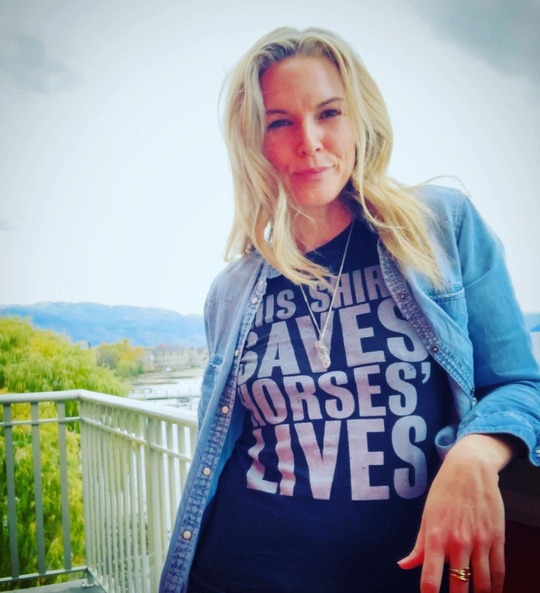No Results Found
The page you requested could not be found. Try refining your search, or use the navigation above to locate the post.

“In the Alberta Rockies, advocates say feral herds are being wrongfully blamed for ecological damage that the province wants to contain, if necessary, with population control.” – The Globe and Mail.
Below we are including a few excerpts from an article that appeared in The Globe and Mail on September 10, 2024.
We also think it is important to note (scroll down) that the Alberta Minister of Forestry and Parks appears to have a vested interest in the eradication of wild horses.
Glover, sitting on a log in the very same forest this summer, says he remembers the protest as a “great resistance” that helped stop the killing of dozens of feral horses near Sundre, Alta. But the resistance is far from over, he stressed, as the provincial government continues to threaten the horses’ very existence.
The carefree creatures are difficult to spot as they roam the foothills of the Canadian Rockies. But Glover, having been around them for years, knows where to look. He calls the horses by name – Stirling, Maverick, One-Eyed Jack – as they graze in fields, gallop through the trees or play fight.
The highest concentration of wild horses in Alberta is in the Sundre area. The province estimated there were 969 horses in 2023, which is just shy of the 1,000-population threshold that triggers immediate action to reduce the herd size through adoption, contraception and, in extreme cases, killing. HAWS, which conducts its own aerial surveys, believes the government’s count is inflated.
Pam Davidson, press secretary for Forestry and Parks Minister Todd Loewen, said there is no cull currently “planned or anticipated” in Alberta. She said the government is adhering to guidelines in its Feral Horse Management Framework, which was developed by a committee that includes wilderness experts, Indigenous groups and academics. “Future committee meetings will include discussions on non-lethal methods of managing feral horses, including adoption and contraception,” Ms. Davidson said.
Alberta Minister of Forestry and Parks, Todd Loewen who introduced the wild horse cull was allegedly denied being appointed to that position – by the (Alberta) Ethics Commissioner – and yes, it’s a cull despite his stating otherwise.
Why was he (allegedly) denied? Could it be because he at one time owned a hunting/outfitting business?
It certainly appears he sidestepped being denied by transferring his hunting/outfitting business to his family.
Talk about a fox minding the hen house.
Politicians count on and often get away with the public not doing due diligence.
Please join us in reaching out to the Ethics Commissioner and asking why Loewen was initially denied the position of Minister of Forestry and Parks.
Let’s see what they have to say – we want them to know that the public is watching and aware.
A follow up conversation/letter can be to ask, “Why is it not a conflict of interest when the outfitting/hunting business is still in his immediate family?”.
Office of the Ethics Commissioner
Suite 1250, 9925 – 109 Street NW
Edmonton, Alberta, Canada T5K 2J8
Telephone Number: (780) 422-2273
Fax Number: (780) 422-2261
E-mail Address: info@ethicscommissioner.ab.ca



The page you requested could not be found. Try refining your search, or use the navigation above to locate the post.
With your help we've saved 16 horses in the last few months -- horses who would otherwise have been shipped directly to slaughter -- and we currently have room to save 4 more.
Thank you to all who have so generously contributed!
UPDATE JAN. 18, 2025: It’s been a challenging whirlwind but 16 horses have been saved, 2 placed in permanent homes which means we have room to save 4 more!
Of course, the initial expense of buying horses from First Nations (or kill buyers) so they are not shipped to slaughter is not the biggest nut to crack. Hay, feed, vetting, farrier, and other costs are needed in addition to funds to initially purchase horses to prevent them from being shipped to slaughter - or being left to languish in pens awaiting the same fate.
We always hate to ask but if you are able to help we would love to be able to fill each of the foster homes before these groups of horses are shipped.
Again, we can’t save them all but with your help we can save a total of 20!



It may be hard for some to believe that tens of thousands of horses, including pets, are routinely slaughtered in Canada, for human consumption.
Some of the meat is consumed in Canada and much of it is shipped to the European Union and other markets, including Japan.
The barbaric slaughter of horses is currently not legal in the United States, BUT horses, including pets and ex-racehorses, from the United States are shipped to Canada and to Mexico to be slaughtered.
In addition Canada allows for the transportation of live horses to Japan, to be slaughtered for human consumption, and unfortunately the transportation of horses destined for slaughter within Canada, and by air, is far from humane.
JAN. 18/25 UPDATE: THANKS TO YOUR HELP 16 HORSES ARE SAFE (2 NOW IN PERMANENT HOMES) BUT WITH YOUR HELP WE HAVE ROOM TO SAVE 4 MORE. BOUVRY IS SLAUGHTERING HORSESFirst, let's start with the fact that the Bouvry slaughter plant in Alberta is STILL slaughtering horses....
DANAE OF MANITOBA ANIMAL SAVE STRIKES AGAIN!Okay, you'll recognize Danae Tonge from at least one video we've featured many times... A CBC National News broadcast covering the inhumane live export of horses from Canada by air for the purpose of slaughter in Japan (and...
COURT DATES JANUARY 6 - 17, 2025 DECEMBER 13, 2024: We continue to hear that Bouvry in Fort MacLeod has closed. That rumour, a misinterpretation of a post by a well known and much respected by us group persists. The main FEEDLOT - which is not adjacent to the plant...

On a breezy day in June, two young stallions, chocolate-brown coats glistening, circle each other before jumping into the air and wrapping their front legs around each other’s necks. A lone white stallion disappears into a forested area nearby while other horses, in shades of grey, brown and black, blend into the rolling landscape.
But what these carefree creatures don’t know is that they are at the centre of a decade-long battle between a wild horse advocacy organization and the provincial government. At stake is the horses’ very existence.
Alberta argues it has to manage the wild horse population to prevent damage to its pasture land – it says the horses’ grazing habits contribute to ecological decline. The province has, in the past, ordered the cull of hundreds of horses.
Meanwhile, the Help Alberta Wildies Society (HAWS), which was formed in 2014 to fight a government-sanctioned slaughter, asserts that the province’s concerns are overblown and that the population must be protected at all costs.


The page you requested could not be found. Try refining your search, or use the navigation above to locate the post.
With your help we've saved 16 horses in the last few months -- horses who would otherwise have been shipped directly to slaughter -- and we currently have room to save 4 more.
Thank you to all who have so generously contributed!
UPDATE JAN. 18, 2025: It’s been a challenging whirlwind but 16 horses have been saved, 2 placed in permanent homes which means we have room to save 4 more!
Of course, the initial expense of buying horses from First Nations (or kill buyers) so they are not shipped to slaughter is not the biggest nut to crack. Hay, feed, vetting, farrier, and other costs are needed in addition to funds to initially purchase horses to prevent them from being shipped to slaughter - or being left to languish in pens awaiting the same fate.
We always hate to ask but if you are able to help we would love to be able to fill each of the foster homes before these groups of horses are shipped.
Again, we can’t save them all but with your help we can save a total of 20!



It may be hard for some to believe that tens of thousands of horses, including pets, are routinely slaughtered in Canada, for human consumption.
Some of the meat is consumed in Canada and much of it is shipped to the European Union and other markets, including Japan.
The barbaric slaughter of horses is currently not legal in the United States, BUT horses, including pets and ex-racehorses, from the United States are shipped to Canada and to Mexico to be slaughtered.
In addition Canada allows for the transportation of live horses to Japan, to be slaughtered for human consumption, and unfortunately the transportation of horses destined for slaughter within Canada, and by air, is far from humane.
JAN. 18/25 UPDATE: THANKS TO YOUR HELP 16 HORSES ARE SAFE (2 NOW IN PERMANENT HOMES) BUT WITH YOUR HELP WE HAVE ROOM TO SAVE 4 MORE. BOUVRY IS SLAUGHTERING HORSESFirst, let's start with the fact that the Bouvry slaughter plant in Alberta is STILL slaughtering horses....
DANAE OF MANITOBA ANIMAL SAVE STRIKES AGAIN!Okay, you'll recognize Danae Tonge from at least one video we've featured many times... A CBC National News broadcast covering the inhumane live export of horses from Canada by air for the purpose of slaughter in Japan (and...
COURT DATES JANUARY 6 - 17, 2025 DECEMBER 13, 2024: We continue to hear that Bouvry in Fort MacLeod has closed. That rumour, a misinterpretation of a post by a well known and much respected by us group persists. The main FEEDLOT - which is not adjacent to the plant...